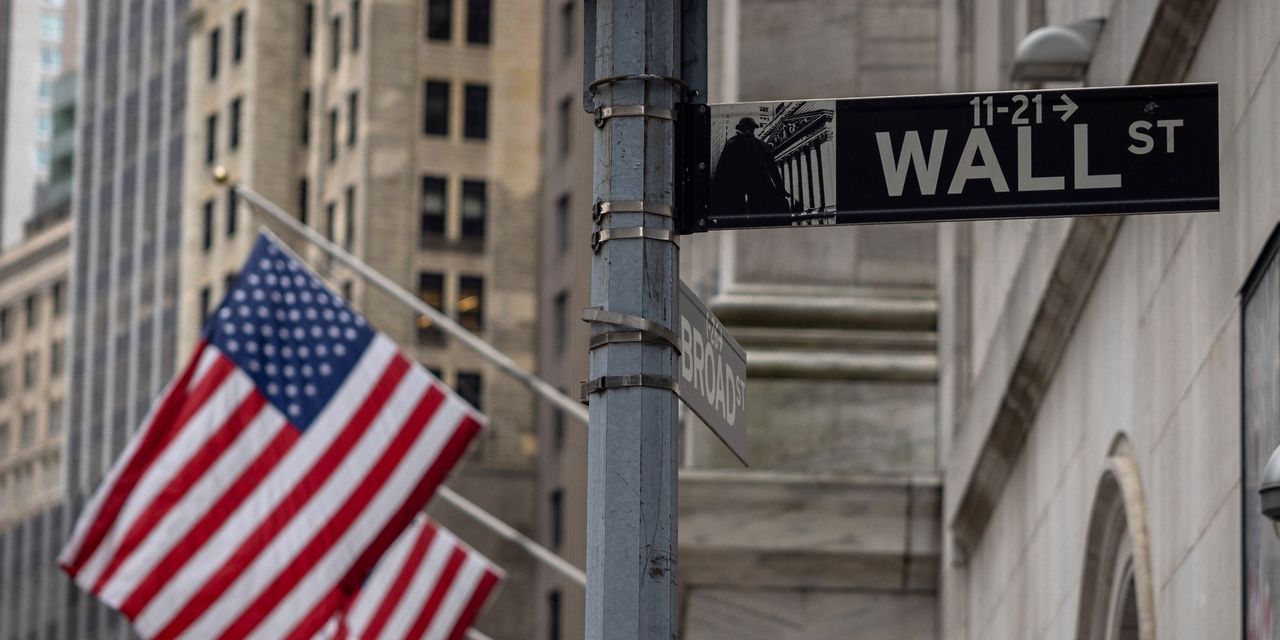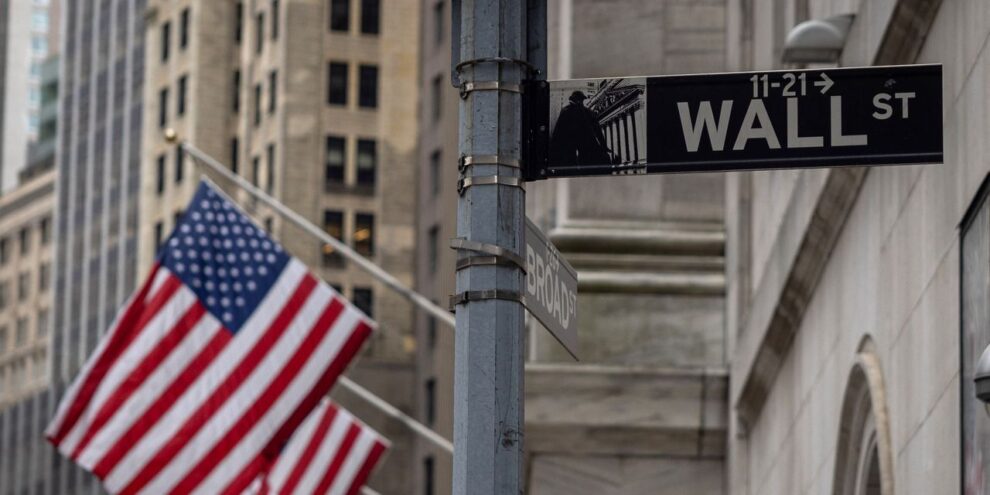
U.S. stocks gave up early gains to turn sharply lower Tuesday after a batch of weak U.S. economic data stoked fears about the outlook for corporate profits.
What’s happening
- The Dow Jones Industrial Average DJIA, -1.56% was down 425 points, or 1.4%, at 31,015.
- The S&P 500 SPX, -2.01% fell 69 points, or 1.8%, to 3,830.
- The Nasdaq Composite COMP, -2.98% dropped 301 points, or 2.6%, to 11,223.
On Monday, major indexes drifted to a modestly lower close. The S&P 500, which recently slid into a bear market, is down 19.6% year to date.
What’s driving markets
U.S. investors were forced to confront a handful of weak economic data, which helped to stoke fears about the outlook for corporate profits and guidance. Expectations for S&P 500 corporate earnings over the coming year have remained surprisingly robust this year, analysts said, leaving room for companies to share disappointing earnings and guidance when the second-quarter earnings season begins next month.
On Tuesday, the Conference Board’s consumer-confidence index dropped in June to a 16-month low of 98.7, as Americans grew more worried about high gas and food prices and the health of the economy. Economists polled by The Wall Street Journal had forecast the index to drop to 100 from a revised 103.2 in May. Meanwhile, the Richmond Fed Manufacturing Index came in at -19, the lowest reading since May 2020.
These data reminded investors about the possibility that the U.S. economy might already be in a recession — something that ARK Invest’s Cathie Wood discussed during a television interview Tuesday morning.
“There’s some nervousness that companies will miss their numbers or deliver negative guidance,” said Steve Sosnick, chief strategist at Interactive Brokers.
“Earnings expectations haven’t really been lowered in the face of economic news that seems to dictate that we should [lower expectations]. And the market is going to have to reconcile this over the next month or so,” he added.
According to FactSet, analysts expect earnings for S&P 500 companies to grow by 4.3% during the second quarter, which would be the lowest quarterly earnings growth since the fourth quarter of 2020. Growth expectations have been revised lower this year, having decreased by one percentage point since March.
Another analyst warned that poor consumer confidence readings risked becoming self-fulfilling, which could in turn threaten an economic contraction in the U.S. due to the consumer’s critical importance to the health of the economy.
“The persistent weakness in confidence surveys suggests a recessionary environment can become self-fulfilling,” said John Lynch, chief investment officer for Comerica Wealth Management, in emailed comments.
Fears about the possibility of a recession in the U.S. have caused defensive stocks like utilities and healthcare to outperform since the start of the year, while momentum stocks like tech have been among the worst-hit.
Earlier in the session, U.S. stocks — and travel-related companies in particular — had gotten a boost on the news that the Chinese government had shortened its quarantine time for international travelers.
Beijing also loosened its testing requirements for people in quarantine.
In other news, six of the biggest U.S. banks said they have enough capital to either maintain or hike their dividends to shareholders after setting enough aside to handle the most extreme economic conditions expected in the coming year.
Wells Fargo & Co. WFC, -0.15% and Goldman Sachs Group Inc. GS, -0.43% both increased their payouts by 20%, while Morgan Stanley MS, +0.93% delivered an 11% rise. Bank of America Corp. BAC, -0.28% increased its dividend by 5%, while Citigroup Inc. C, -1.30% and JPMorgan Chase & Co. JPM, -0.48% held their dividend flat. Shares of the largest U.S. banks generally outperformed on Tuesday.
Need to Know: Oaktree’s Howard Marks is finding bargains. ‘I am starting to behave aggressively,’ he says
The yield on the 10-year Treasury note BX:TMUBMUSD10Y was up 1 basis point at 3.200%. Yields and debt prices move opposite each other.
In a television interview, New York Fed President John Williams said he expected the U.S. economy would see a slowdown, but not a recession as the central bank aggressively tightens monetary policy in an effort to rein in inflation. Williams said he expected policy makers to debate whether to hike rates by another 50 or 75 basis points when they meet in July, after delivering a 75 basis point increase earlier this month — the largest since 1994.
Data also showed the U.S. trade deficit in goods narrowed by 2.2% in May to $104.3 billion. The S&P CoreLogic Case-Shiller 20-city index posted a 21.2% year-over-year gain in April, up slightly from 21.1% in the previous month. In April, the 20-month index rose a seasonally adjusted 2.3%. A separate report from the Federal Housing Finance Agency showed a 1.6% monthly gain. And over the last year, the FHFA index was up 18.8%.
Read: Should the Fed start selling its mortgage holdings at a loss to fortify its inflation fight?
Companies in focus
- Nike Inc. NKE shares fell6.3% after the apparel maker beat earnings estimates but was cautious on margins and on China in particular. But Chinese stocks advanced after a loosening of quarantine requirements in the world’s second-largest economy.
- JetBlue Airways Corp. JBLU, -0.34% once again raised its offer for discount carrier Spirit Airways Inc. SAVE, +1.11% as it attempts to outbid rival Frontier Group Holdings Inc. ULCC, +0.64%. JetBlue shares fell 0.2%, Spirit shares gained 0.3% and Frontier shares were up 0.6% amid a positive tone across the airline sector. The popular U.S. Global Jets ETF JETS, -0.76% fell 0.6%.
Other assets
- The ICE U.S. Dollar Index DXY, +0.56%, a measure of the currency against a basket of six major rivals, rose 0.5%.
- Bitcoin BTCUSD, -3.18% was down 2.3% nea5 $20,300.
- Oil futures rose, with the U.S. benchmark CL.1, +1.93% up 2.1% near $112 a barrel. Gold futures GC00, -0.20% closed 0.2% to settle at $1,821.20 an ounce, a near two-week low.
- The Stoxx Europe 600 SXXP, +0.27% rose 0.3%, while London’s FTSE 100 UKX, +0.90% advanced 0.97%.
- The Shanghai Composite SHCOMP, +0.89% and Hong Kong’s Hang Seng Index HSI, +0.85% each ended 0.9% higher, while Japan’s Nikkei 225 NIK, +0.66% rose 0.7%.











Add Comment